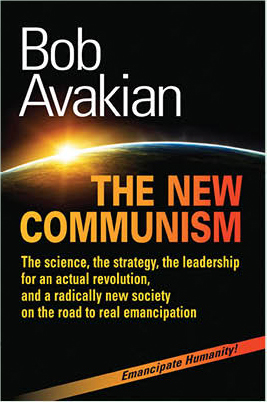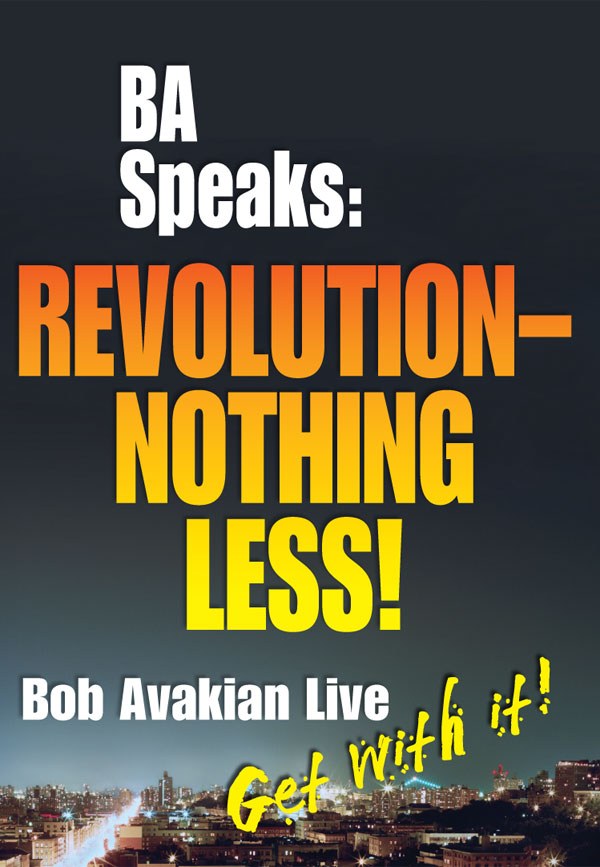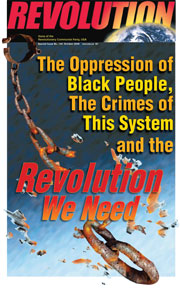Prisoners in America’s Hellholes Continue National Strike
October 3, 2016 | Revolution Newspaper | revcom.us

Announcing: The Launch of a Pathbreaking New Book from Bob Avakian
Get this book into the
hands of prisoners!
Here’s how. The publisher has a special offer: Buy one paperback for yourself from Insight Press, and buy a second book at 50% off for a prisoner and it will be sent directly to a prisoner. Total price for this offer is $25.50, plus $5.00 for shipping.
Contact Insight Press
info@insight-press.com
773-329-1699
As we go to press, a national prison labor strike, which started on September 9, is entering its fourth week. Information is hard to confirm because of censorship and prison lockdowns, but there are reports that prisoners have participated in the strike in prisons across the country, including in Alabama, California, Florida, Texas, Indiana, Louisiana, Michigan, New York, Ohio, South Carolina and Washington.
The USA leads the world in mass incarceration with five percent of the world’s population and 25 percent of its prisoners. There are more than 2 million people in prisons and jails in the U.S. and African-Americans, Latinos, and Native Americans have, by far, the highest rates of mass incarceration. This system locks up millions of people in this society for whom it has no future, and who this system fears as a socially unstable force and potential base for revolution. Many who were sent to prison for crimes they did not commit. Many who are without decent jobs or education and living in poverty, driven to crime by the workings of this system.
Mass incarceration in the USA is a crime against humanity that serves to violently enforce the needs and interests of a system of exploitation and oppression. It is significant and inspiring when prisoners find the ways to rise up and resist the barbaric, inhuman conditions they are subjected to. They do so at great risk. And anyone with a conscience must stand with them and oppose all attempts by authorities to punish these rebels.
In recent years, there have been other powerful strikes and protests by prisoners around issue including horrific prison conditions, the torture of solitary confinement, and the mistreatment and deportation of immigrants in detention centers. This past May a strike demanding an end to prison slave labor began at Alabama’s Holman, Staton, and Elmore Correctional Facilities, and then spread to at least two other prisons.
Now, this current strike is shining a light on the fact that on top of the genocidal dimension of mass incarceration, and the sadistic brutality inflicted on prisoners, nearly 900,000 prisoners in the U.S. are forced to work in jobs that pay, in some states, nothing or as little as 12 cents an hour. In Texas, inmates who refuse to work lose their privileges and are confined to their cells for 24 hours a day.
The strike is demanding a repeal of that part of the 13th Amendment to the U.S. Constitution, which abolishes slavery “except as a punishment for crime whereof the party shall have been duly convicted.”
This strike began on September 9, the anniversary of the famous 1971 Attica Rebellion – the most powerful and significant prison rebellion in U.S. history. At New York’s Attica State Penitentiary over half of Attica’s 2,200 inmates, mainly Black but also white and Puerto Rican prisoners, seized control of large parts of the prison, taking 38 guards hostage, declaring, “We are men. We are not beasts, and we do not intend to be beaten and driven as such... What has happened here is but the sound before the fury of those who are oppressed...” Four days later police, sheriffs, park police, and the National Guard launched a murderous assault at the prison, killing 39 unarmed people.
Organizers of the current strike issued a call to prisoners to refuse to work their jobs maintaining prisons, cooking meals, and working at jobs that produce profit for the prison system and private corporations. A call for the strike said, “This is a call to end slavery in America. This call goes directly to the slaves themselves. We are not making demands or requests of our captors, we are calling ourselves to action. To every prisoner in every state and federal institution across this land, we call on you to stop being a slave, to let the crops rot in the plantation fields, to go on strike and cease reproducing the institutions of your confinement.”
Prisoners at dozens of America’s hellholes across the country had organized for months, using creative ways to communicate, including social media and the support of family members and others on the outside. [see: http://revcom.us/a/456/45-years-after-attica-rebellion-resistance-in-americas-hellhole-prisons-en.html]
Protests Erupt, Strike Spreads
Two days before the strike, starting the night of September 7 and lasting into the early morning of September 8, more than 400 inmates at Florida’s Holmes Correctional Institution rose up in a series of protests that spread throughout the compound. Prisoners worked together to disrupt ways in which the dehumanizing network of surveillance cameras and guard posts keep prisoners under constant scrutiny. As the guards suppressed one outbreak, new protests erupted in other dormitories. According to the Miami Herald, authorities re-established control “after setting off canisters of chemicals, making it hard for the prisoners to breathe.”
Then on September 9, at the Kinross Correctional Facility in Kincheloe, Michigan, prisoners assigned to the kitchen didn’t show up for work. The next day about 400 of the prison’s 1,300 inmates staged a more-than-three-hour protest march in a commons area in front of the facility’s housing units. After this, when prison authorities began going through the housing units and targeting organizers to be removed, some prisoners began damaging things. Reportedly 150 prisoners were shipped out to another prison, and Kinross remained on lockdown.
There were also reports of prisoners refusing to go to work on September 9 in three prisons in Florida—Gulf Annex Correctional Institution, Mayo Correctional Institution and Jackson Correctional Institution. And women prisoners joined the strike at the Central California Women’s Prison in Chowchilla, at the Fluvanna prison in Troy, Virginia, and at a prison in Kansas.
Authorities Retaliate
Prison officials reacted to the strike with vicious retaliation. A number of prisoner have been put on lockdown with prisoners kept in their cells, denied phone access or any way to communicate with the outside. By Wednesday evening, six days into the strike, the Incarcerated Workers' Organizing Committee (IWOC) estimated that 15,310 prisoners were on lockdown in facilities where organizing or strikes had been confirmed.
Organizers have been targeted for punishment, put in solitary confinement and in some cases transferred to other facilities. Prison authorities have imposed ominous censorship, denying prisoners access to the media to tell the truth about the conditions they face and the violence they were hit with. And for weeks now, there has been almost no coverage at all of the strike in the mainstream media.
Azzurra Crispino, the media co-chair of the Incarcerated Workers Organizing Committee said on Democracy Now! that at Kinross, “a riot repression team came in and dragged prisoners out of their showers and out of their cells, zip-tied their arms behind their back and threw them out in the yard and left them out there for five to six hours in the rain without any access to bathroom facilities.”
A Radically Different and Better World Is Necessary and Possible
These courageous acts by prisoners pose the biggest questions about the nature of a system that brands itself as the “leader of the free world” and “the model of human rights,’ but finds it necessary to lock up more people than any other country under the most horrific conditions.
The actions of these prisoners create an opening, and a real challenge to those who see that the world does not have to be this way: to connect people with a scientific understanding of the problem, and enlist them in the solution.
How the new revolutionary society will address this situation is blueprinted in the Constitution for the New Socialist Republic in North America, written by Bob Avakian and adopted by the Central Committee of the Revolutionary Communist Party. “Article III. Rights of the People and the Struggle to Uproot All Exploitation and Oppression” includes a section “Legal and Civil Rights and Liberties.” We are reprinting part of that section on this page, and strongly encourage readers to dig into and promote the whole Constitution for the New Socialist Republic in North America.
Volunteers Needed... for revcom.us and Revolution
If you like this article, subscribe, donate to and sustain Revolution newspaper.

 From the Constitution for the New Socialist Republic in North America
From the Constitution for the New Socialist Republic in North America





